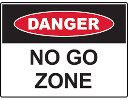 One of the critical concepts I learned as a collision investigator this that fully loaded heavy trucks have 50 to 60% of the braking capability of light vehicles. This assumes that the braking system is not overheated, has been maintained properly and is correctly adjusted.
One of the critical concepts I learned as a collision investigator this that fully loaded heavy trucks have 50 to 60% of the braking capability of light vehicles. This assumes that the braking system is not overheated, has been maintained properly and is correctly adjusted.
Air brake systems also suffer from brake lag, a short time period that occurs between the driver stepping on the brake pedal and the brakes starting to apply.
These two thoughts ran through my mind when I read a Facebook post from a commercial driver. He had used a frame from his dashcam that showed proper following distance between his front bumper and the back bumper of the pickup truck ahead of him. He had drawn a pink rectangle in this space and advised that he needed every inch of it to stop if something happened to require it.

If that space wasn't there, whatever was inside it was going to be crushed. Think carefully about that for a moment.
We've all been taught to leave at least a two second following distance between us and the vehicle ahead of us when conditions are good. When they are not, we need to leave more space, perhaps adding another second for each factor that departs from the ideal.
Remember that 50 to 60% braking comparison? This means that heavy commercial drivers actually need to follow a four second rule. So do the drivers in front of them!
We should also have been taught that we don't complete our pass or change lanes unless we can see all of the front of the vehicle behind us in our inside rear view mirror. This may not be enough space when a heavy commercial vehicle is behind you. In fact, if you are too close to the front of a heavy truck, you could become invisible to it's driver.
The area in front of a commercial vehicle is not the only place that a light vehicle driver needs to worry about. There are a number of other "No Zones" beside and to the rear. Ignoring them could involve you in a squeeze play as this driver in Port Alberni found out.

For more on sharing the road with heavy commercial vehicles, see this article on the TranBC web site.
Taking away a commercial vehicles following distance is dangerous. It happens way too often. Most people don’t realize that large loaded vehicles need more time to stop and that is why they leave more space. On the other hand commercial drivers have to know that this is the behaviour of most drivers. Some do not leave appropriate following distance. Driving a loaded 50’ trailer you will have to concede to small vehicles on the road. Just a part of the job.
- Log in to post comments
How come this 'Safety Director' puts on his seatbelt, even when he isn't actually going anywhere?
And meanwhile, he's apparently driving the only rig anywhere that doesn't have any convex mirrors?
- Log in to post comments
I really hate when people or organizations put bad or incomplete information on the internet and pass it off as what to do.
I learned to teach a mirror adjustment seminar and there is so much wrong information here. For starters, as CompetentDrivingBC noted, there are no convex mirrors, also both side mirrors were badly adjusted and showed far too much of the back of the vehicle that they were missing what is more important, what is beside the vehicle. With properly adjusted mirrors and convex mirrors there is no blind spot on the drivers side of the vehicle, what you can't see in your mirror you can see by looking straight out the side window. On the right side, when properly adjusted there is a very small blind spot just beside the truck but by adding a second convex mirror on the nose of the truck all blind spots to the side can be eliminated. The blind spot to the rear however, will always be there as well as the need for a large safety zone in front.
- Log in to post comments
- Log in to post comments

Dangerous Behaviour